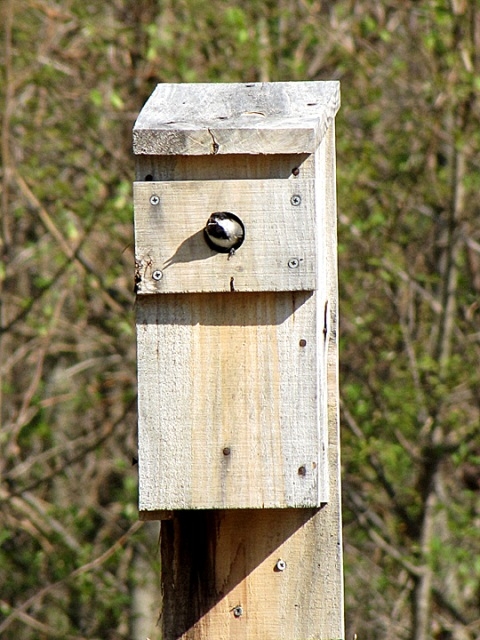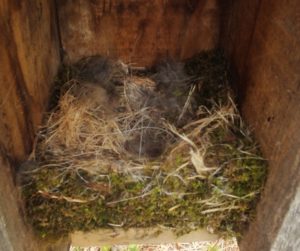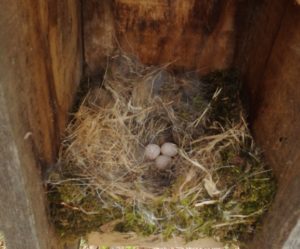Nest Box Monitoring: Chickadees
by Tim Burris, Mariton Preserve Manager

Photo by Carole Mebus.
We often call our nest boxes Bluebird boxes, but they attract a variety of cavity nesting species. It was the idea of putting up nest boxes that helped Eastern Bluebirds populations recover across the east. I don’t have a problem with other species using the boxes. I just put up more, so there is room for everyone.
I have been monitoring nest boxes for over 30 years, but it has only been about the last decade that Chickadees* have been using them regularly. There are lots of natural cavities in Mariton’s forest so I can’t explain the trend, but it mirrors the reports that I receive from the other NLT preserves.

Chickadee nest.
Chickadees make nests of mostly moss with a layer of hair on top. I think the hair is used for insulation by the parents, so the female can spend more time foraging and less time on the nest. If one is new to monitoring nest boxes, they may not realize that this plug or lid or hair can be easily lifted to count eggs and then replaced. If you are afraid to check the eggs, the hair will disappear when the chicks hatch and you will be able to count the babies.

The same nest with the plug temporarily removed.
*(Mariton is a location where both Black-capped and Carolina Chickadees overlap. There is evidence that they are utilizing each other’s songs and hybridizing in this area. It is almost impossible to tell the two species apart without a physical examination. For that reason, most birders in our area now refer to them as just Chickadees, with no specification.)
